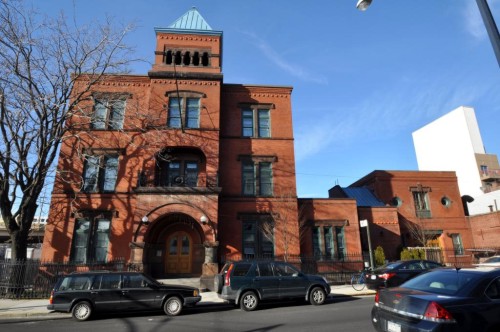Spurred by a period of economic growth and an influx of European immigrants during the 1850s, more than a dozen shipbuilding firms turned the neighborhood into a major shipbuilding center. While shipbuilding declined after the Civil War, Greenpoint’s other industrial enterprises, which included porcelain making, glass making, and oil refining, continued to thrive. Greenpoint’s residential development was closely aligned with its industrial growth, as workers’ housing was built inland from the waterfront. Large, elaborate rowhouses were constructed for owners and managers, while modest rowhouses, tenements, and apartment buildings were built for laborers. The neighborhood also boasts many fine churches and institutional buildings, such as the Greenpoint Savings Bank and the Mechanics and Traders Bank.
There are two historic districts in Greenpoint: the Greenpoint Historic District, located in the neighborhood’s core, and the Eberhard Faber Pencil Company Historic District, which covers roughly one block. A section of the neighborhood is also a National Register of Historic Places District.
Greenpoint Historic District
Greenpoint, Brooklyn, NY, USASTATUS: Designated Historic District
Astral Apartments
184 Franklin Street, Brooklyn, NY, USASTATUS: Designated Individual Landmark
Eberhard Faber Pencil Factory Historic District
61 Greenpoint Avenue, Brooklyn, NY, USASTATUS: Designated Historic District
(Former) 19th Police Precinct Station House and Stable
43 Herbert Street, Brooklyn, NY, USASTATUS: Designated Individual Landmark
Public School 34
131 Norman Ave, Brooklyn, NY, USASTATUS: Designated Individual Landmark
Shelter Pavilion and Attached Buildings, Monsignor McGoldrick Park
744 Nassau Avenue, Brooklyn, NY, USASTATUS: Designated Individual Landmark
Sidewalk Clock, 753 Manhattan Avenue
753 Manhattan Avenue, Brooklyn, NY, USASTATUS: Designated Individual Landmark








